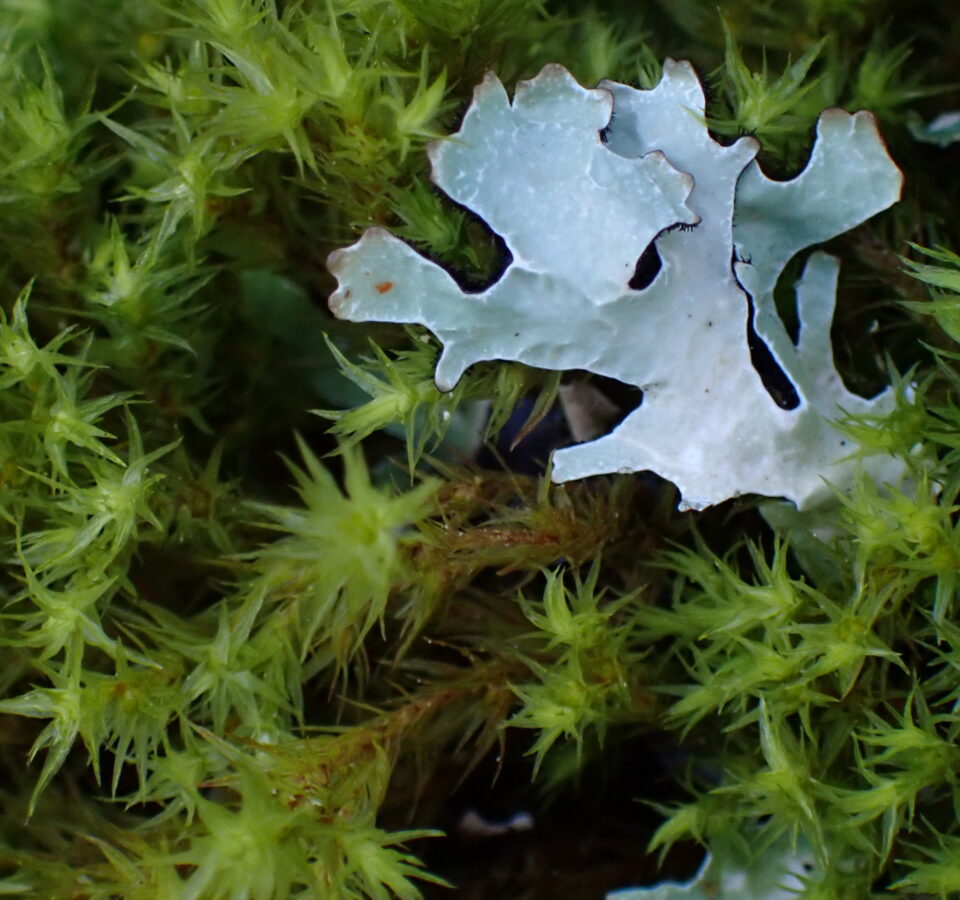Which Evolved First, Lichens or Mosses?
“Overall, the most likely date for the origin of lichens would be around 250 million years ago.”
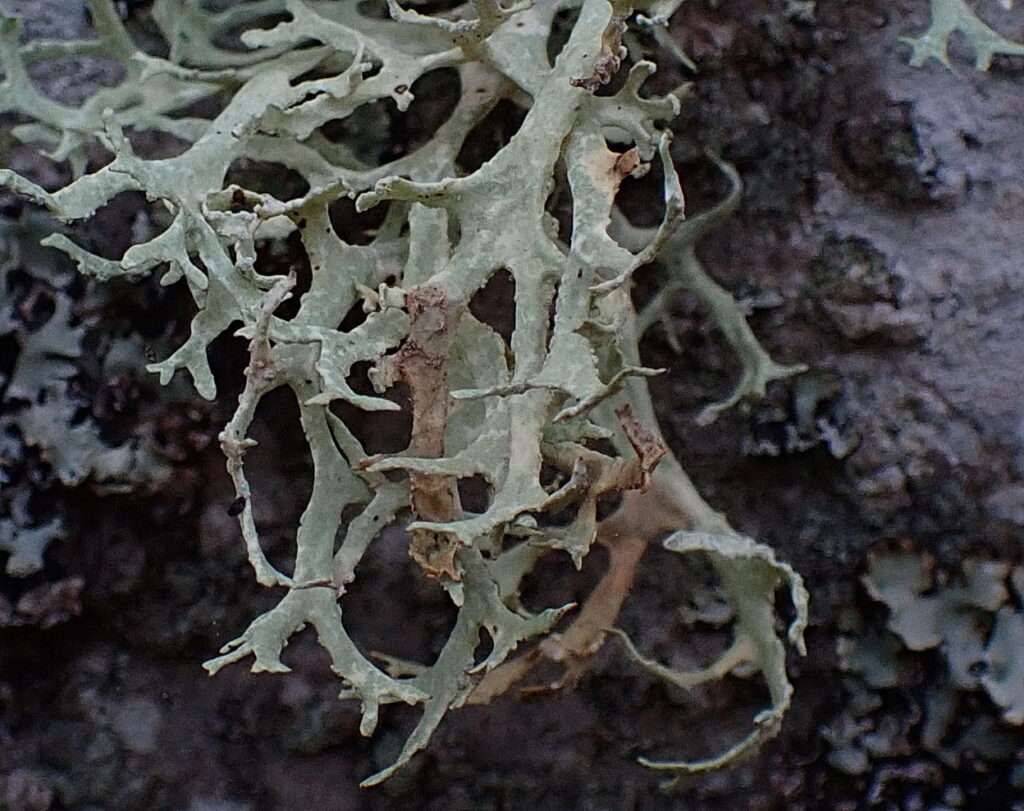

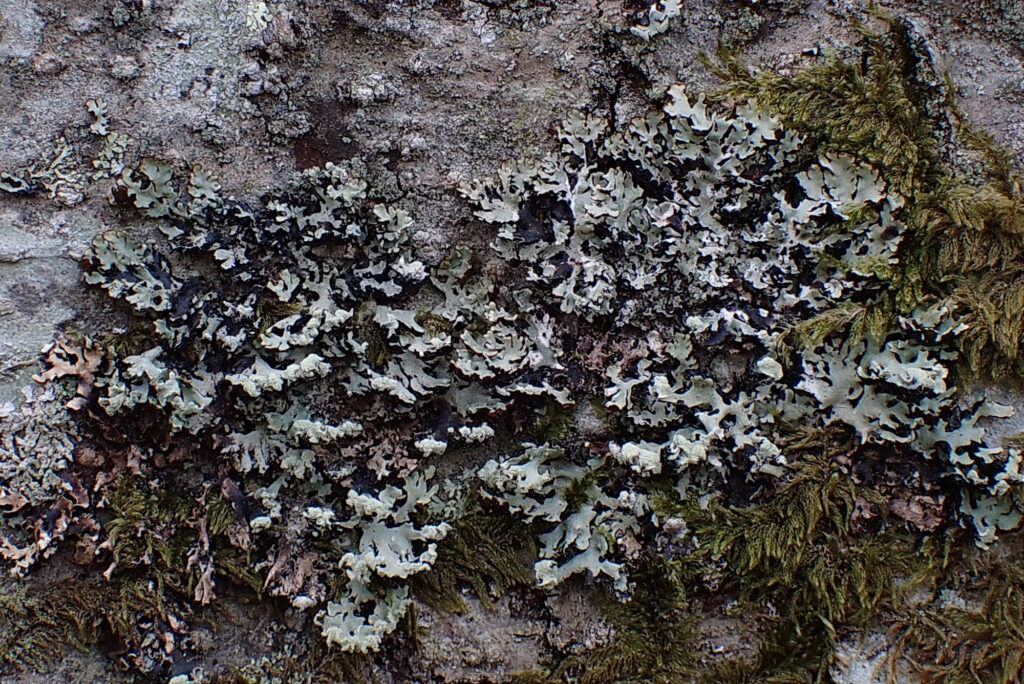
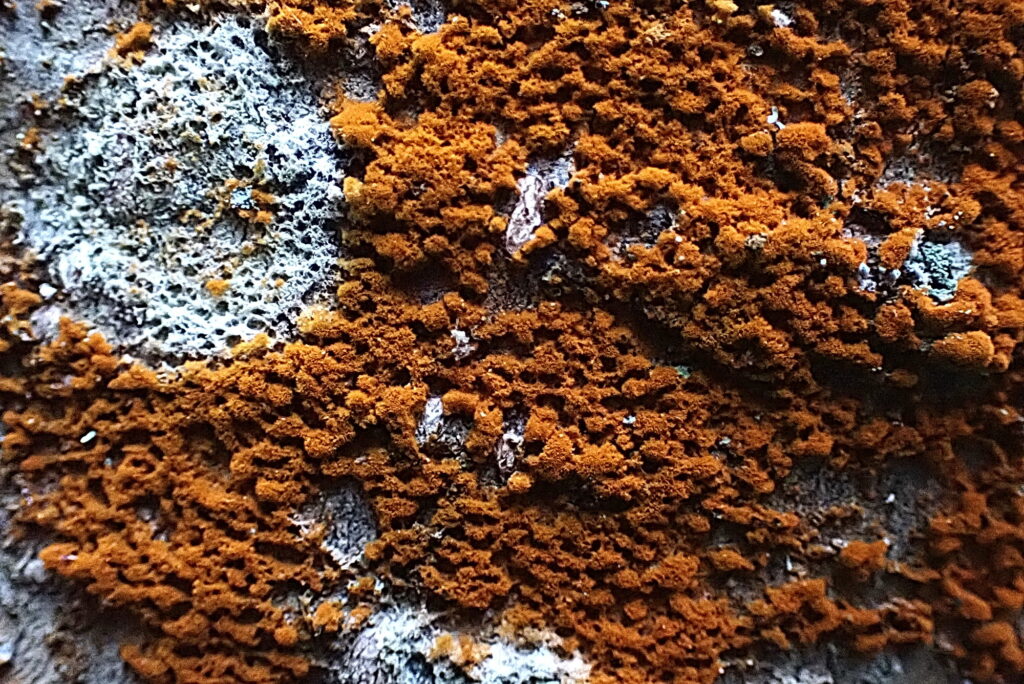
A Few of the 20,000+ Lichen Species
But mosses have been around for approximately 400 million years, about 150 million years longer than lichens.

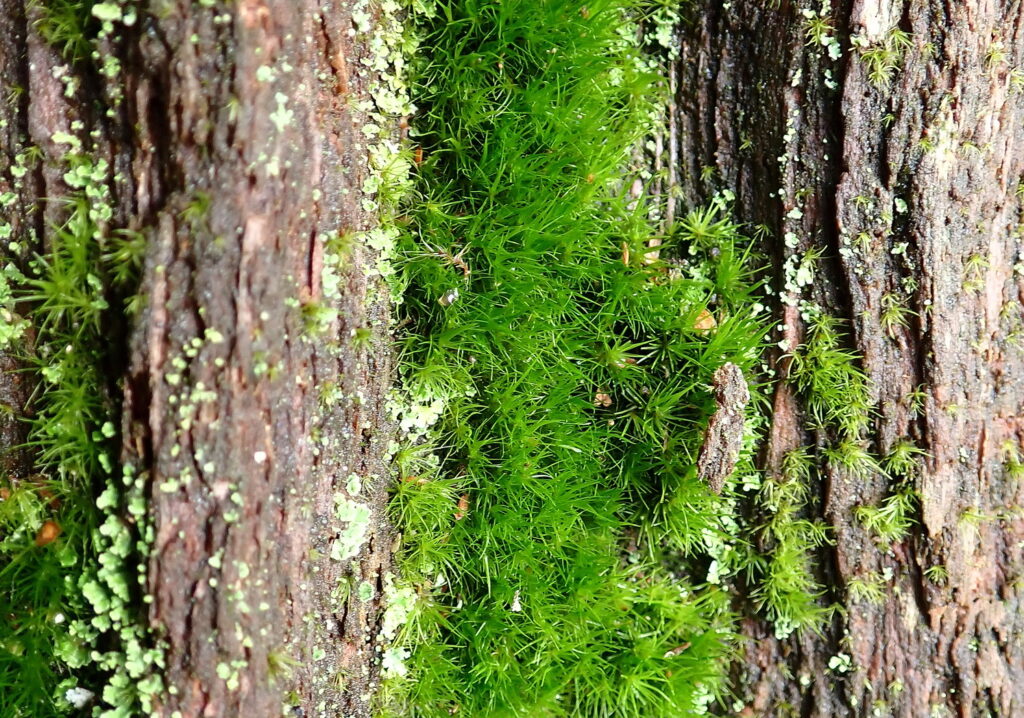
A Couple of the 10,000+ Moss Species
Over their 400 million year history, mosses have continued to evolve, adapting to the many changing physical conditions of earth. The same is presumably true for lichens. Though both mosses and lichens can reproduce asexually (for example, fragmentation), that by itself would not have been nearly as effective as sexual reproduction for evolution.

Sexual reproduction in mosses may seem complex, but when explained in simpler terms (here for example) it is actually quite similar to sexual reproduction in general. In typical mosses, one generation, the “gametophytes” (i.e., -phytes that produce gametes) consist of individuals that are either female (producing egg cells) or male (producing sperm cells). Sperm cells swim through thin layers of moisture to fertilize egg cells. Fertilized egg cells grow through cell division into individuals called “sporophytes” (i.e., -phytes that produce spores). Sporophytes live as parasites on the female plants and produce millions of male and female spores. When these spores land on suitable spots they grow into new gametophytes, and the cycle is continued.
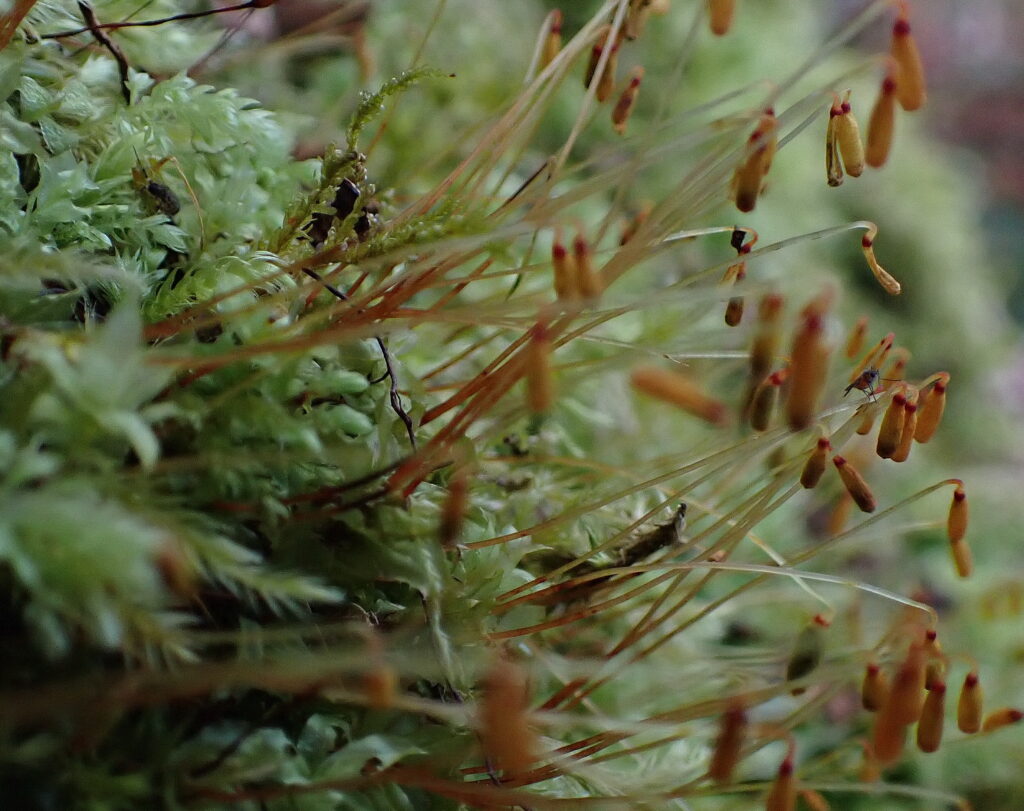
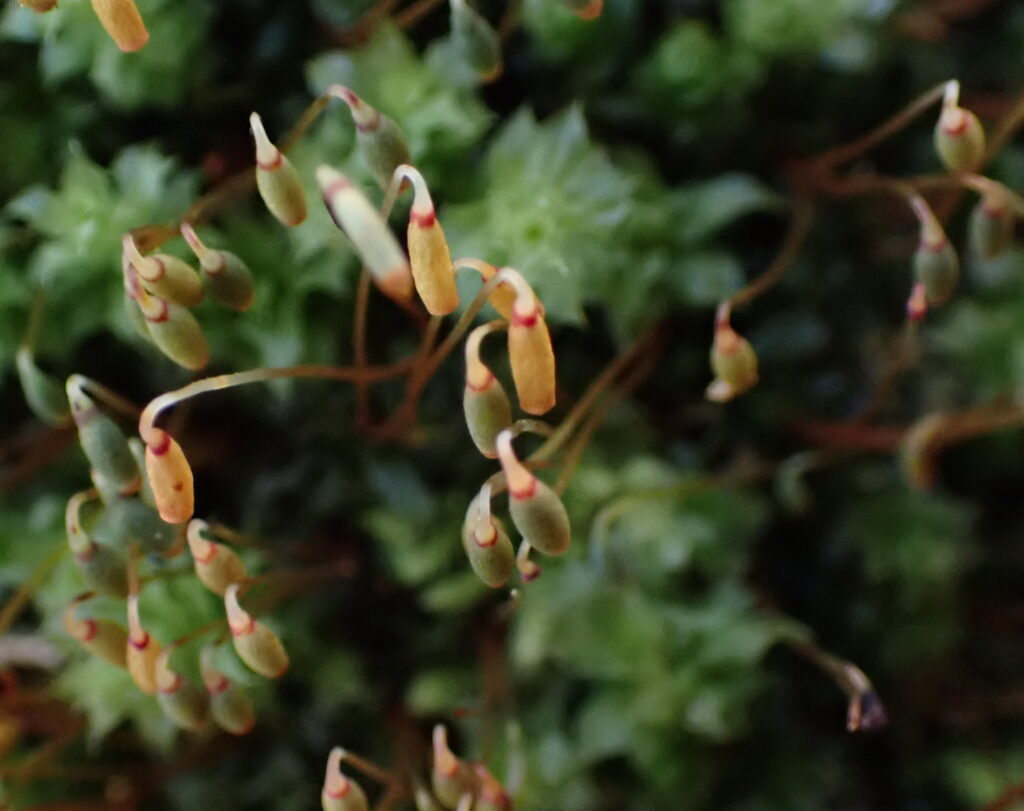
Moss Sporophytes Growing On Female Gametophytes
Sexual reproduction in lichens is slightly more complex. When lichens reproduce sexually, the DNA from the different symbiotic species (fungi and algae) does not transfer together to the next generation in the spores, like mitochondria in egg cells. The spores produced by lichens “must meet with compatible algal partners before functional lichens can form.”
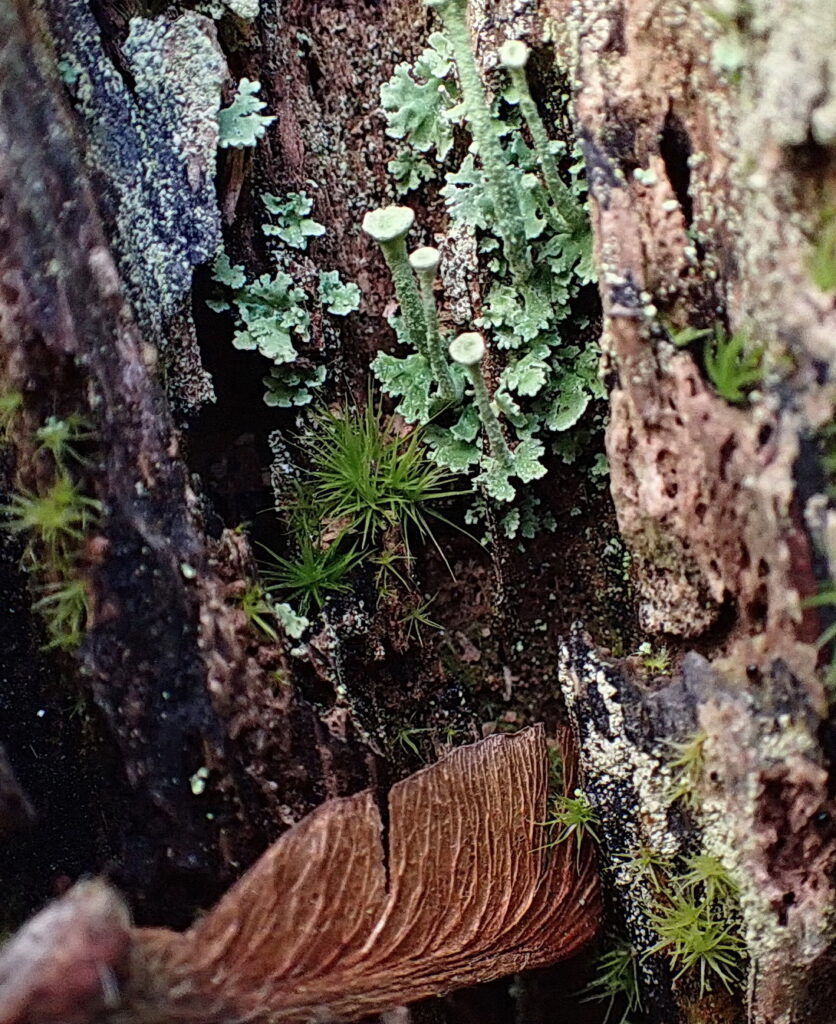
The Trumpet-Like Structures On This Lichen May Be Spore-Producing
But do the algal partners arise from algae living in lichens or from “free-living” algae? Probably both (here). If lichen spores had to “capture” the correct species of algae from other lichens growing nearby, it might limit their ability to colonize new empty spaces. Amazing, though, to imagine the odds of a lichen spore bumping into a free-living alga in the vast space of the biosphere.
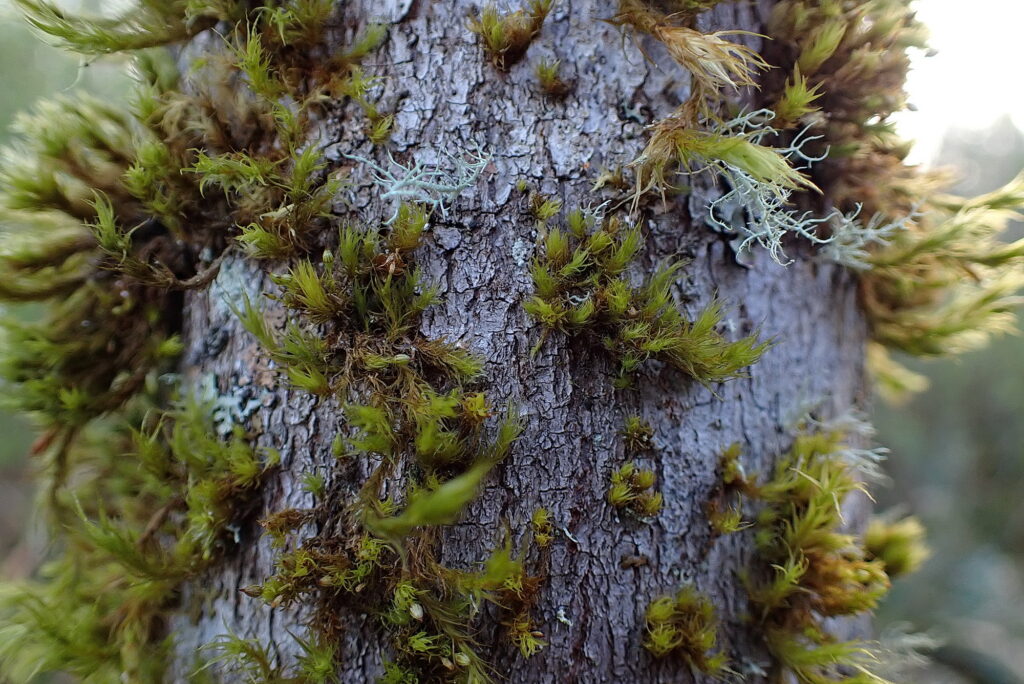
New Lichens Scattered Amidst New Mosses on a Young Maple Trunk
